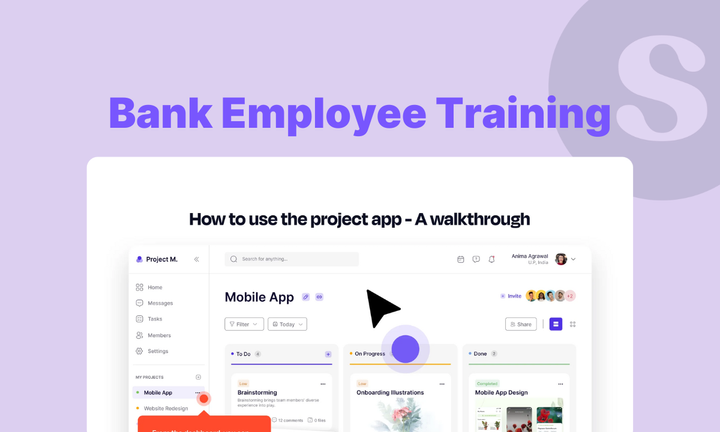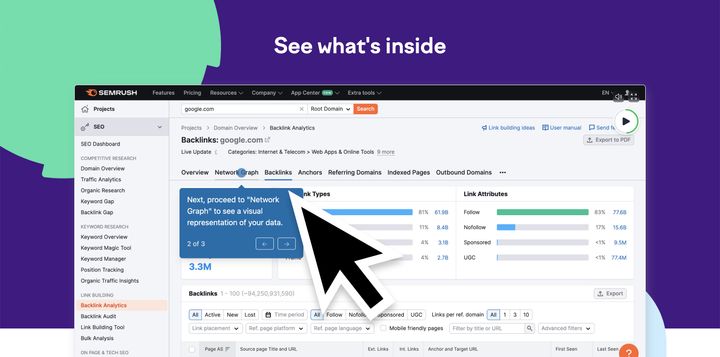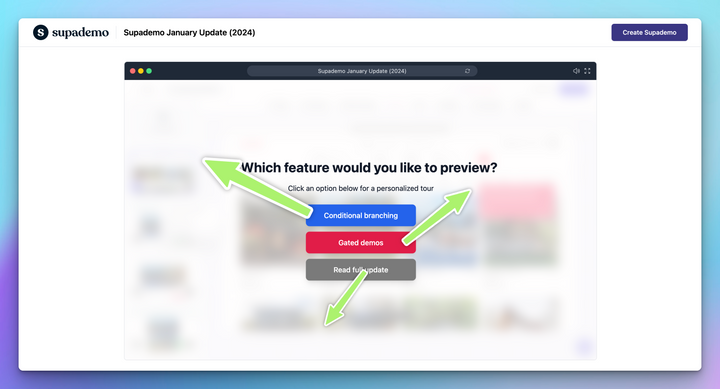TL;DR
The solution? A modern, data-driven training approach that’s personalized, interactive, and continuously optimized.
What is bank employee training?
Bank employee training equips staff with the skills to serve customers, follow regulations, and use modern banking tools effectively. It goes beyond onboarding to cover continuous learning in compliance, customer service, and digital systems.
Unlike standard corporate programs, bank training operates under strict regulatory and security standards. It prioritizes accuracy, ethics, and trust while strengthening communication and product knowledge.
Why is bank employee training important?
Effective employee training is essential to keep banks and credit unions compliant, competitive, and customer-focused. Well-trained teams create safer, smoother, and more trusted banking experiences.
Strengthens compliance and reduces risk exposure
Regular, role-specific training keeps staff current with AML, KYC, and data security regulations. It helps prevent compliance breaches, reporting errors, and fraudulent activities—protecting both the institution and its customers from regulatory penalties.
Improves customer experience and retention
Trained employees can explain complex financial products clearly, handle high-pressure situations with empathy, and resolve issues without escalation.
This builds trust, shortens service times, and improves overall satisfaction, leading to repeat business and stronger member loyalty.
Enhances operational efficiency and innovation
A well-trained workforce minimizes manual errors, reduces onboarding time for new hires, and adopts new systems or technologies faster.
Cross-training across departments also enables teams to handle seasonal surges and innovate internal processes.
Boosts employee engagement
Employees who receive continuous learning opportunities feel more confident and invested in their roles.
Structured development plans, mentorship, and recognition programs reduce turnover and help banks retain skilled professionals in a competitive labor market.
Core areas of bank employee training
A strong training program covers more than compliance checklists. It develops well-rounded employees who can manage risk, serve customers with empathy, and adapt to new technology.
The most effective programs combine technical, interpersonal, and leadership skills to prepare staff for every stage of their career.
| Training Area | What It Covers | Why It Matters |
|---|---|---|
| Compliance and Risk Management | Anti-Money Laundering (AML), Know Your Customer (KYC), data privacy, cybersecurity, and fraud prevention. | Keeps the institution compliant with regulations, reduces financial risk, and protects customer data and trust. |
| Customer Service and Relationship Management | Communication skills, active listening, empathy, conflict resolution, and handling customer objections. | Improves satisfaction, builds long-term loyalty, and strengthens the bank’s reputation for reliable service. |
| Digital Banking and Technology Adoption | Online banking platforms, digital payments, cybersecurity hygiene, and fintech tool integrations. | Helps employees stay confident using new systems and ensures a smooth digital experience for customers. |
| Sales and Product Knowledge | Understanding financial products, identifying customer needs, and cross-selling ethically. | Boosts revenue while maintaining compliance and customer trust. |
| Leadership and People Management | Coaching, delegation, performance management, and decision-making. | Prepares high-performing employees for leadership roles and strengthens internal succession pipelines. |
| Diversity, Equity, and Inclusion (DEI) | Bias awareness, inclusive communication, and equitable customer engagement. | Builds trust with diverse communities and fosters a respectful, inclusive workplace culture. |
Common challenges in bank employee training
Even with the right goals in place, many banks struggle to make training effective and scalable. The biggest obstacles usually come down to outdated content, low engagement, and difficulty measuring real impact.
1. Regulatory changes outpace content updates
Compliance rules don't wait for quarterly training cycles. When AML requirements or KYC protocols change, banks need updates deployed across all branches within days—not months.
Yet most institutions still rely on manual content reviews and slow approval chains. The result? Employees operate on outdated information, exposing the bank to regulatory penalties and reputational risk.
2. Information overload and outdated materials
Training contributes to this problem when critical policy changes get buried in 80-slide decks or 200-page manuals. Employees skim, miss key details, and make costly errors like approving transactions that should have been flagged.
3. Scaling across multiple branches and roles
Delivering the same quality of training to 50 branches across multiple regions requires systems to standardize processes, schedules, and content. But most banks struggle with fragmented tools, inconsistent delivery, and regional variations that undermine compliance and create knowledge gaps.
4. Low engagement in traditional formats
Long lectures or compliance videos rarely hold attention. Without interactivity or real-world application, employees forget 70% of what they learn within a week.
This leads to higher error rates, failed audits, and frustrated customers dealing with undertrained staff.
5. Difficulty measuring effectiveness
Many banks still rely on static PDFs, intranet pages, or legacy LMS tools to deliver training. These systems make it hard to track engagement, update content quickly, or personalize learning by role.
Modern banks are now moving toward personalized, interactive, and data-driven learning formats that solve these challenges more effectively.
How to build an effective bank employee training program?
Building a strong training program isn’t about adding more content. It’s about designing experiences that help employees learn faster, retain more, and apply skills directly on the job.
Step 1: Identify skill gaps and set clear objectives
Start by assessing where employees stand today and what skills they’ll need tomorrow. Review performance reports, compliance results, and customer feedback to spot recurring gaps, whether it’s regulatory knowledge, digital adoption, or soft skills like communication.
Then define clear objectives that tie training to measurable outcomes. For example:
- Reduce compliance errors by 20%
- Shorten new hire ramp-up time by two weeks
- Improve customer satisfaction scores by 10%
This ensures every training initiative supports a clear business goal instead of simply adding more content.
Step 2: Design a blended learning strategy
Use a mix of training methods to keep learning flexible, engaging, and relevant. Blended learning combines different formats so employees can learn in ways that fit their role and schedule.
Include a variety of approaches such as:
- Peer-to-peer learning to encourage knowledge sharing across teams
- Job shadowing for practical, hands-on experience
- Interactive microlearning for short, focused lessons employees can complete anytime
- Gamified modules to make compliance training more engaging
To create a truly hands-on learning environment, use interactive demo tools like Supademo. Banks can turn real workflows into guided, clickable demos.
Employees can safely practice tasks such as verifying KYC details, updating customer records, or processing payments without using live data. This learn-by-doing approach makes training faster, safer, and more effective.
Step 3: Personalize training by role
Each role in a bank requires a different set of skills and context. Tailoring training to each function helps employees learn what matters most, apply it faster, and deliver consistent results.
For example:
- Tellers handle cash transactions and customer interactions.
- Relationship managers focus on advisory, CRM systems, and ethical cross-selling.
- Back-office teams ensure accuracy in documentation, reporting, and compliance tasks.
With Supademo, you can create interactive learning paths for each role. Employees can walk through real workflows step by step, such as processing a payment or reviewing a customer file.
These demos can be shared anywhere, including Slack, Notion, intranets, or your LMS. This keeps learning contextual, accessible, and directly tied to daily work.
Step 4: Create effective feedback loops
Training should evolve with how employees actually work. Build regular feedback loops to understand what’s resonating, what’s unclear, and where additional support is needed.
Use quick surveys, in-module ratings, or short check-ins after each session to gather feedback. Track which demos or lessons employees replay most often to identify areas that need clarification.
With Supademo, collecting feedback is seamless. You can see how employees interact with each training guide, where they pause, and which steps they revisit. These insights help you refine content, close knowledge gaps faster, and keep training relevant as systems or regulations change.
Step 5: Measure performance and iterate
Training should create measurable results, not just course completions. Track key metrics like compliance accuracy, error rates, customer satisfaction, and onboarding speed. Review data regularly to identify gaps and update content as regulations or workflows change.
Supademo gives you built-in analytics to track the effectiveness of your training content.
You can see how employees engage with each demo, where they drop off, and which topics drive the most interaction—making it easier to refine training and show real impact.
Redefining hands-on learning for the banking workforce
The next phase of bank employee training is all about practical, continuous learning. Instead of long compliance sessions and static slide decks, forward-looking banks are embracing interactive formats that help employees learn faster and perform better.
Key takeaways:
- Training must be continuous, not occasional.
- Real-world simulations improve retention and reduce errors.
- Role-based, on-demand learning builds confidence and consistency across branches.
- Measuring engagement and outcomes turns training into a strategic advantage.
That is where Supademo helps.
Supademo lets banks create guided, hands-on learning experiences that replicate real workflows such as processing loans, verifying KYC, or updating customer records.
These interactive demos can be embedded in LMS platforms, Slack, or onboarding portals, giving teams instant access to practical, measurable training.
Ready to modernize your employee training?
Try Supademo and see how interactive learning can transform how your teams learn and perform.
FAQs
What training is essential for bank employees?
Bank employees need regular training in compliance (AML, KYC, data security), customer service, product knowledge, and digital banking tools. Continuous learning in these areas ensures accuracy, compliance, and strong customer relationships across all branches and roles.
What type of training is required for a teller?
Tellers need focused training on cash handling, transaction processing, fraud detection, and customer interaction. They should also understand compliance requirements like KYC and AML to ensure safe, error-free operations during everyday banking transactions.
How often should bank employees receive compliance training?
Compliance training should be conducted at least annually, with refreshers whenever new regulations or policies are introduced. Regular updates ensure employees stay aligned with current standards and reduce the risk of costly compliance violations.
How can banks measure training effectiveness?
Track key metrics such as completion rates, compliance accuracy, and customer satisfaction scores. Feedback surveys and performance data reveal if employees can apply their learning effectively and help refine training programs for better results.
What is the best way to deliver training across multiple branches?
Use a centralized digital platform with interactive, trackable modules to ensure consistency and visibility across teams. Tools like Supademo make it easy to share guided, hands-on training experiences that scale across locations while keeping content measurable and up to date.




